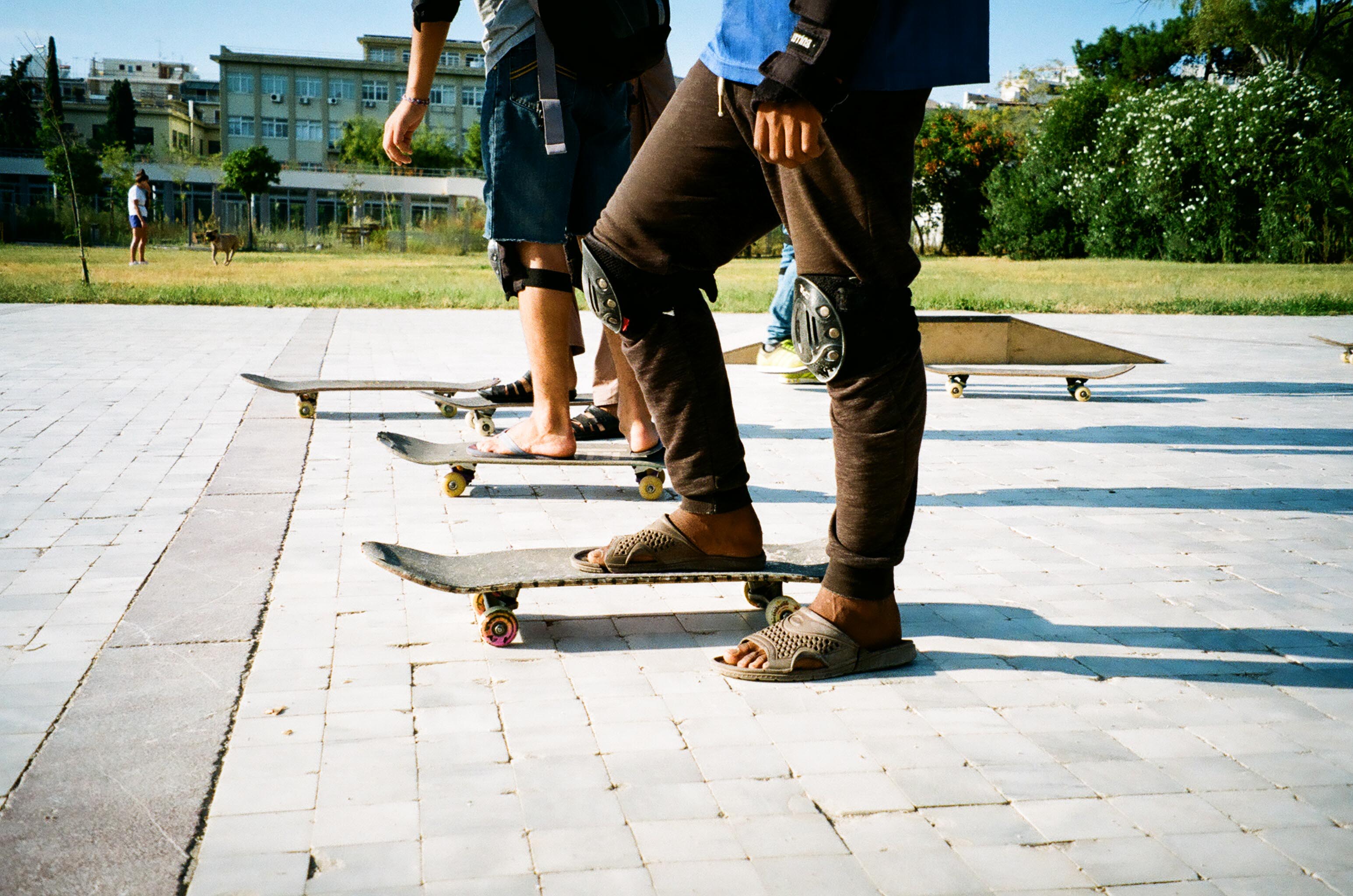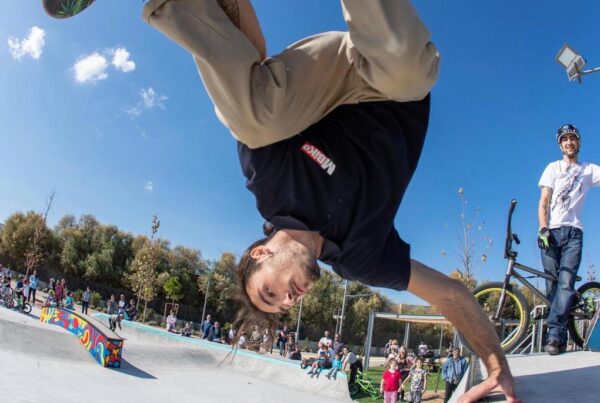Many of the young people we teach have experienced prolonged periods of trauma and stress, which can have a lasting effect on behaviour and cause severe changes in the developing brain. Current research shows that engaging in regular physical activity can stimulate brain function, which, in turn, helps to regulate stress and improve mental health. Skateboarding in particular can be highly soothing due to its vast sensory stimuli and social nature; most importantly, in how it teaches tenacity and resilience.
In our next few blog posts we’re going to address an intricate topic from some different angles. That topic is trauma. I will begin here in quite general terms—outlining what trauma is, how it comes about and how it affects the developing brain—and in the posts to follow we will speak more specifically about trauma and mental health in the context of the work we do here in Athens. I’d like to state a disclaimer at this point: we are not professionals in this subject. While we have attended training classes and read widely about trauma, most of our knowledge comes from self-study and the experiences we have in our day-to-day work. Even the process of writing this down is an attempt to further understand a complicated and challenging subject. We hope that in doing so we can highlight some really important aspects for anyone wishing to gain more understanding of the effects of long-term trauma and stress.
Trauma is most easily defined as an internal response to an external, threatening event; one which overwhelms our personal coping mechanisms—sometimes beyond the point of recovery. When confronted with a situation perceived to be threatening, most people naturally undergo an automatic response that maximises their chances of survival—this is called the traumatic stress response. The traumatic stress response ignites activity across all levels of the brain; the limbic system, the domain of the brain that is responsible for emotions, behaviour, memories and stimulation, is immediately activated and the body is flooded with stress hormones. Such a dramatic increase in hormone levels can be exceptionally damaging for the human body, and in extreme cases, can alter the functioning of the entire personality. This physiological reaction is what occurs when we speak about going into ‘survival mode’—heart rate and breathing quicken, blood pressure rises, and oxygen is sent to the muscles. The whole body tenses up and prepares to either confront the threat or flee from it (fight or flight).
There are many different reactions to trauma, and we see them manifest in the behaviour of the young people we teach, daily. From violence and aggression to vacant stares and unhealthy attachments. In its most severe cases, trauma can affect every aspect of someone’s life; inhibiting them from associating with themselves, their peers and their surroundings. Young children in particular are especially vulnerable to trauma; at such a crucial stage of personal development this exposure to unregulated stress can have a long-lasting, damaging effect. The two main responses to unregulated stress are defined as dissociation and hyperarousal, both of which are survival techniques of different natures. Dissociation occurs when the body shuts down in an attempt to protect itself from becoming totally overwhelmed. Common manifestations in behaviour are muteness, avoidance of eye contact and failing to respond to touch. In contrast, hyperarousal results from the body attempting to defend itself by accumulating a vast amount of energy and maintaining it. Hyperarousal often leads to sudden, unwarranted aggressive behaviour—as well as hypervigilance, anxiety, irritability and difficulty focusing on the task at hand.
There are frequent correlations between the age and gender of the person experiencing trauma and the type of reaction they undergo in response to the traumatic event. Younger children are more likely to dissociate, whilst older children are more likely to remain hyper-aroused; girls tend to dissociate whereas boys tend to remain hyper-aroused. Younger children are more likely to form unhealthy attachment behaviour, and older children are more likely to alienate themselves with those around them.
Crucially, both dissociation and hyperarousal make it extremely hard to communicate inner emotions. Someone suffering from post-traumatic stress disorder (PTSD) might be experiencing a disjunction between what they perceive as their wants and desires and their actual actions. This can be further frustrating and isolating for them to deal with, and this is why it’s so important to empathise with anyone displaying clear behaviour resulting from a traumatic event. PTSD tends to accentuate activity in the brain areas that process fear, whilst also disrupting the communication between the logical and emotional sides of the brain. This heightens anxiety, makes it difficult to assess potentially threatening situations and leads to emotional dysregulation. Many of the young people we teach are in an almost constant state of fight or flight (survival) mode, meaning that they are extremely reactionary to situations that a secure person probably wouldn’t find triggering. In most cases, their immediate surroundings are highly stimulating, living in close quarters with hundreds, perhaps thousands, of other people and with an uncertain future.
Within this context, the physiological reactions to the experience of trauma and long-term stress are hard to remedy. Recovery usually begins once the affected person is in a safe, stable environment; clear of the events which threatened them. Saying this, there are still many things that can be done to make the immediate environment much more suitable for healing. Secure social networks and well-formed, healthy attachment relationships play a massive part in rehabilitation—as well as the ability to express what has happened. The young people we teach are not ‘naughty kids’, they are navigating their way through an overwhelming situation whilst living in a chaotic and unstable environment. It is vital to view their behaviour as a result of many harsh and intermingling factors which are mostly out of their control. This way we can gage understanding, demonstrate empathy, and be more constructive in our practices in order to alleviate stress.
In the next couple of posts, we will look more specifically into the psychosocial factors affecting the young people we teach, and the importance of fostering a calm and supportive learning environment to aid the relief of trauma and stress.
Words: Ruby Mateja
Photographs: Futuro Berg







